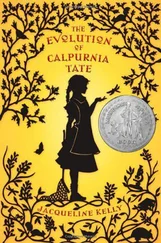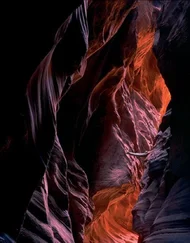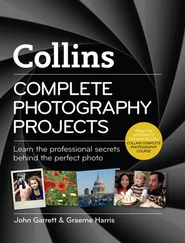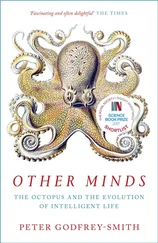John Werge - The Evolution of Photography
Здесь есть возможность читать онлайн «John Werge - The Evolution of Photography» — ознакомительный отрывок электронной книги совершенно бесплатно, а после прочтения отрывка купить полную версию. В некоторых случаях можно слушать аудио, скачать через торрент в формате fb2 и присутствует краткое содержание. Жанр: visual_arts, foreign_home, на английском языке. Описание произведения, (предисловие) а так же отзывы посетителей доступны на портале библиотеки ЛибКат.
- Название:The Evolution of Photography
- Автор:
- Жанр:
- Год:неизвестен
- ISBN:нет данных
- Рейтинг книги:5 / 5. Голосов: 1
-
Избранное:Добавить в избранное
- Отзывы:
-
Ваша оценка:
- 100
- 1
- 2
- 3
- 4
- 5
The Evolution of Photography: краткое содержание, описание и аннотация
Предлагаем к чтению аннотацию, описание, краткое содержание или предисловие (зависит от того, что написал сам автор книги «The Evolution of Photography»). Если вы не нашли необходимую информацию о книге — напишите в комментариях, мы постараемся отыскать её.
The Evolution of Photography — читать онлайн ознакомительный отрывок
Ниже представлен текст книги, разбитый по страницам. Система сохранения места последней прочитанной страницы, позволяет с удобством читать онлайн бесплатно книгу «The Evolution of Photography», без необходимости каждый раз заново искать на чём Вы остановились. Поставьте закладку, и сможете в любой момент перейти на страницу, на которой закончили чтение.
Интервал:
Закладка:
Being anxious to obtain possession of one of those marvellous sun-pictures, and hoping to get an idea of the manner in which they were produced, I paid a visit, one sunny morning, to Mr. McGhee, the Daguerreotypist, dressed in my best, with clean shirt, and stiff stand-up collar, as worn in those days. I was a very young man then, and rather particular about the set of my shirt collar, so you may readily judge of my horror when, after making the financial arrangements to the satisfaction of Mr. McGhee, he requested me to put on a blue cotton quasi clean “dickey,” with a limp collar, that had evidently done similar duty many times before. You may be sure I protested, and inquired the reason why I should cover up my white shirt front with such an objectionable article. I was told if I did not put it on my shirt front would be solarized , and come out blue or dirty, whereas if I put on the blue “dickey” my shirt front would appear white and clean. What “solarized” meant, I did not know, nor was it further explained, but, as I very naturally wished to appear with a clean shirt front, I submitted to the indignity, and put on the limp and questionably clean “dickey.” While the Daguerreotypist was engaged with some mysterious manipulations in a cupboard or closet, I brushed my hair, and contemplated my singular appearance in the mirror somewhat ruefully. O, ye sitters and operators of to-day! congratulate yourselves on the changes and advantages that have been wrought in the practice of photography since then. When Mr. McGhee appeared again with something like two wooden books in his hand, he requested me to follow him into the garden; which was only a back yard. At the foot of the garden, and against a brick wall with a piece of grey cloth nailed over it, I was requested to sit down on an old chair; then he placed before me an instrument which looked like a very ugly theodolite on a tripod stand—that was my first sight of a camera—and, after putting his head under a black cloth, told me to look at a mark on the other side of the garden, without winking or moving till he said “done.” How long I sat I don’t know, but it seemed an awfully long time, and I have no doubt it was, for I know that I used to ask people to sit five and ten minutes, afterwards. The sittings over, I was requested to re-enter the house, and then I thought I would see something of the process; but no. Again Mr. McGhee went into the mysterious chamber, and shut the door quickly. In a little time he returned and told me that the sittings were satisfactory—he had taken two—and that he would finish and deliver them next day. Then I left without obtaining the ghost of an idea of the modus operandi of producing portraits by the sun, beyond the fact that a camera had been placed before me. Next day the portraits were delivered according to promise, but I confess I was somewhat disappointed at getting so little for my money. It was a very small picture that could not be seen in every light, and not particularly like myself, but a scowling-looking individual, with a limp collar, and rather dirty-looking face. Whatever would mashers have said or done, if they had gone to be photographed in those days of photographic darkness? I was, however, somewhat consoled by the thought that I, at last, possessed one of those wonderful sun-pictures, though I was ignorant of the means of production.
Soon after having my portrait taken, Mr. McGhee disappeared, and there was no one left in the neighbourhood who knew anything of the mysterious manipulations of Daguerreotyping. I had, nevertheless, resolved to possess an apparatus and obtain the necessary information, but there was no one to tell me what to buy, where to buy it, nor what to do with it. At last an old friend of mine who had been on a visit to Edinburgh, had purchased an apparatus and some materials with the view of taking Daguerreotypes himself, but finding that he could not, was willing to sell it to me, though he could not tell me how to use it, beyond showing me an image of the house opposite upon the ground glass of the camera. I believe my friend let me have the apparatus for what it cost him, which was about £15, and it consisted of a quarter-plate portrait lens by Slater, mahogany camera, tripod stand, buff sticks, coating and mercury boxes of the roughest description, a few chemicals and silvered plates, and a rather singular but portable dark room. Of the uses of the chemicals I knew very little, and of their nature nothing which led to very serious consequences, which I shall relate in the proper place. Having obtained possession of this marvellous apparatus, my next ardent aspiration was to make a successful use of it. I distinctly remember, even at this distant date, with what nervous curiosity I examined all the articles when I unpacked them in my father’s house, and with what wonder, not unmixed with apprehension, my father looked upon that display of unknown, and to him apparently nameless and useless toys. “More like a lot of conjuror’s traps than anything else,” he exclaimed, after I had set them all out. And a few days after he told one of my young friends that he thought I had gone out of my mind to take up with that “Daggertype” business; the name itself was a stumbling block in those days, for people called the process “dagtype, docktype, and daggertype” more frequently than by its proper name, Daguerreotype. What a contrast now-a-days, when almost every father is an amateur photographer, and encourages both his sons and daughters to become the same. My father was a very good parent, in his way, and encouraged me, to the fullest extent of his means, in the study of music and painting, and even sent me to the Government School of Design, where I studied drawing under W. B. Scott; but the new-fangled method of taking portraits did not harmonise with his conservative and practical notions. One cause of his disapprobation and dissatisfaction was, doubtless, my many failures; in fact, I may say, inability to show him any result. I had acquired an apparatus of the roughest and most primitive construction, but no knowledge of its use or the behaviour of the chemicals employed, beyond the bare numerical order in which they were to be used, and there was no one within a hundred miles of where I lived, that I knew of, who could give me lessons or the slightest hint respecting the process. I had worn out the patience of all my relations and friends in fruitless sittings. I had set fire to my singular dark room, and nearly set fire to the house, by attempting to refill the spirit lamp while alight, and I was ill and suffering from salivation through inhaling the fumes of mercury in my blind, anxious, and enthusiastic endeavours to obtain a sun-picture. It is not long since an eminent photographer told me that I was an enthusiast, but if he had seen me in those days he would, in all probability, have told me that I was mad. Though ill, I was not mad; I was only determined not to be beaten. I was resolved to keep pegging away until I obtained a satisfactory result. My friends laughed at me when I asked them to sit for a trial, and they either refused, or sat with a very bad grace, as if it really were a trial to them; but fancy, fair and kindly readers, what it must have been to me! Finding that my living models fought shy of me and my trials, I then thought of getting a lay figure, and borrowed a large doll—quite as big as a baby—of one of my lady friends. I stuck it up in a garden and pegged away at it for nearly six months. At the end of that time I was able to produce a portrait of the doll with tolerable certainty and success. Then I ventured to ask my friends to sit again, but my process was too slow for life studies, and my live sitters generally moved so much, their portraits were not recognisable. There were no head-rests in those days, at least I did not possess one, or it might have been pleasanter for my sitters and easier for myself. What surprised me very much—and I thought it a singular thing at the time—was my success in copying an engraving of Thorburn’s Miniature of the Queen. I made several good and beautiful copies of that engraving, and sent one to an artist-friend, then in Devonshire, who wrote to say that it was beautiful, and that if he could get a Daguerreotype portrait with the eyes as clear as that, he would sit at once; but all the “Dagtypes” he had hitherto seen had only black holes where the eyes should be. Unfortunately, that was my own experience. I could copy from the flat well enough, but when I went to the round I went wrong. Ultimately I discovered the cause of all that, and found a remedy, but oh! the weary labour and mental worry I underwent before I mastered the difficulties of the most troublesome and uncertain, yet most beautiful and permanent of all the photographic processes that ever was discovered or invented; and now it is a lost art. No one practises it, and I don’t think that there are half-a-dozen men living—myself included—that could at this day go through all the manipulations necessary to produce a good Daguerreotype portrait or picture; yet, when the process was at the height of its popularity, a great number of people pursued it as a profession in all parts of the civilized world, and in the United States of America alone it was estimated in 1854 that there were not less than thirty thousand people making their living as Daguerreans. Few, if any, of the photographers of to-day—whether amateur or professional—know anything of the forms or uses of plates, buffs, lathes, sensitising or developing boxes, gilding stands, or other Daguerreotype appliances; and I am quite certain that there is not a dealer in all England that can furnish at this date a complete set of Daguerreotype apparatus.
Читать дальшеИнтервал:
Закладка:
Похожие книги на «The Evolution of Photography»
Представляем Вашему вниманию похожие книги на «The Evolution of Photography» списком для выбора. Мы отобрали схожую по названию и смыслу литературу в надежде предоставить читателям больше вариантов отыскать новые, интересные, ещё непрочитанные произведения.
Обсуждение, отзывы о книге «The Evolution of Photography» и просто собственные мнения читателей. Оставьте ваши комментарии, напишите, что Вы думаете о произведении, его смысле или главных героях. Укажите что конкретно понравилось, а что нет, и почему Вы так считаете.












